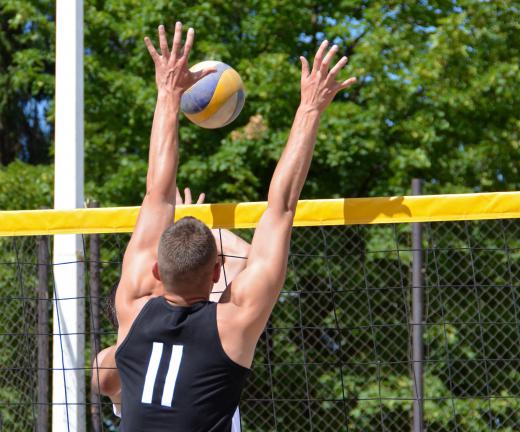Sports nets are often a part of backyard living for many active families. Tennis nets can be used to play backyard tennis, but some other nets can be used for a couple different sports. Some nets can be used for field hockey and soccer, for instance, while others can be used for volleyball and badminton. Golf nets can also sometimes be used as batting cage nets.
Tennis enthusiasts may want to install a tennis court, complete with a tennis net. A backyard tennis court can be made from either grass, concrete, clay, or synthetic materials. The dimensions of the court are usually around 78 feet (24 meters) long and either 27 or 36 feet (8 or 11 meters) wide with a tennis net set up in the center. These types of backyard nets should touch the ground, or at least be very close to it, and they are about three feet (1 meter) high.

Soccer nets are other common types of backyard nets. Two of these nets are usually necessary, and they are placed at each end of a long field, facing each other. When playing soccer, two teams of players try to kick a soccer ball into their opponents' nets.
Hockey nets are very similar to soccer nets, and these two types of nets can often be used interchangeably. Field hockey can be played in a backyard using backyard nets. A small rubber ball is used while playing field hockey, as opposed to a puck, which is used in ice hockey. Like soccer, teams attempt to get the ball into their opponents' nets, which are located at either end of a long field. Instead of kicking the ball, however, hockey sticks are used to move the ball.

Volleyball nets are some of the most popular backyard nets. These types of nets are typically several feet long and suspended a few feet (1 meter) above the ground. Two vertical metal poles on each side of the court are used to suspend the net. During a volleyball game, two teams of people smack a ball over this net with their hands and fists. Points are scored when the ball hits the ground or when it goes out of bounds.

Badminton nets another very popular type of backyard net. These backyard nets are very similar to volleyball nets. During a game of badminton, two teams of two players use racquets to bounce a shuttlecock back and forth over the net. As with volleyball, points are scored when the shuttlecock either hits the ground or goes out of bounds.
Some backyard nets can also be used as golf nets. A golf net typically consists of a metal frame draped with netting. When a golfer hits his ball toward the device, the netting stops the ball from going too far.
